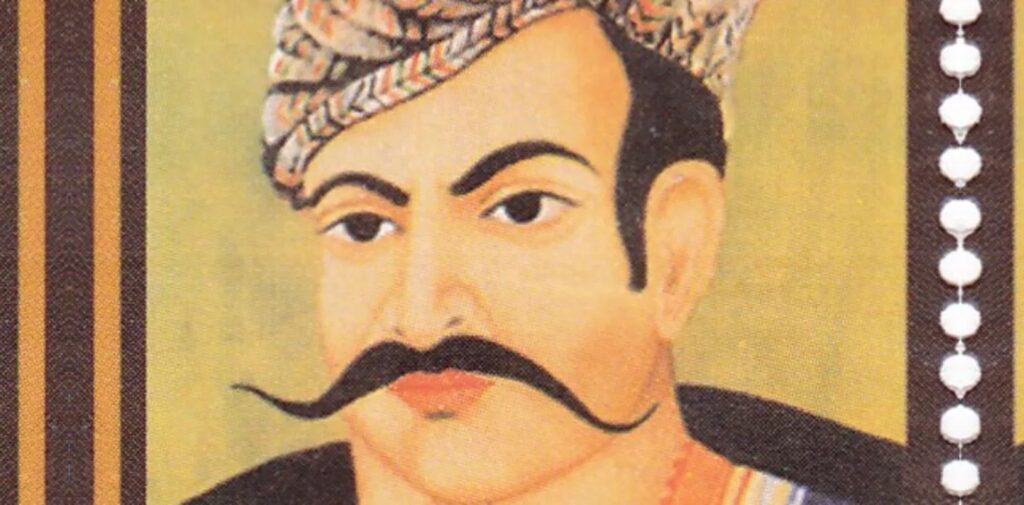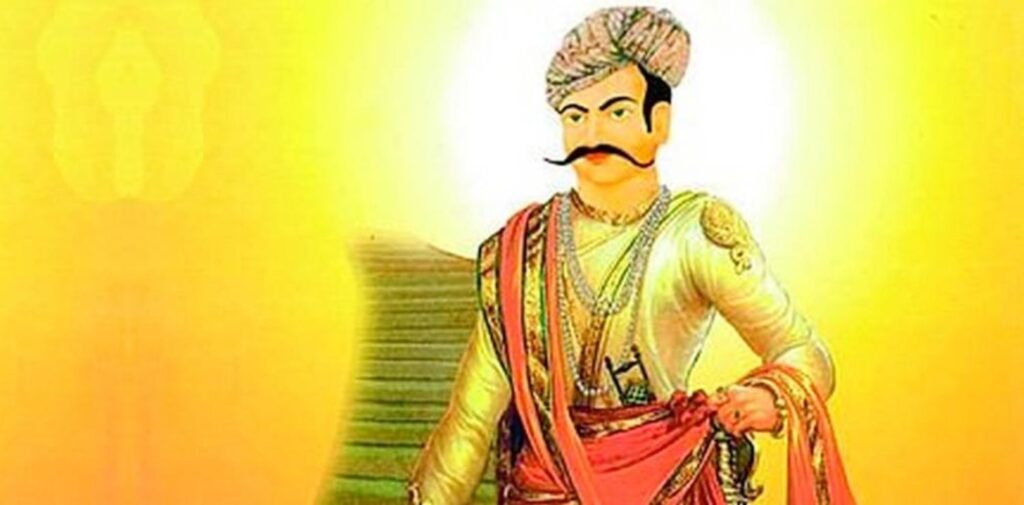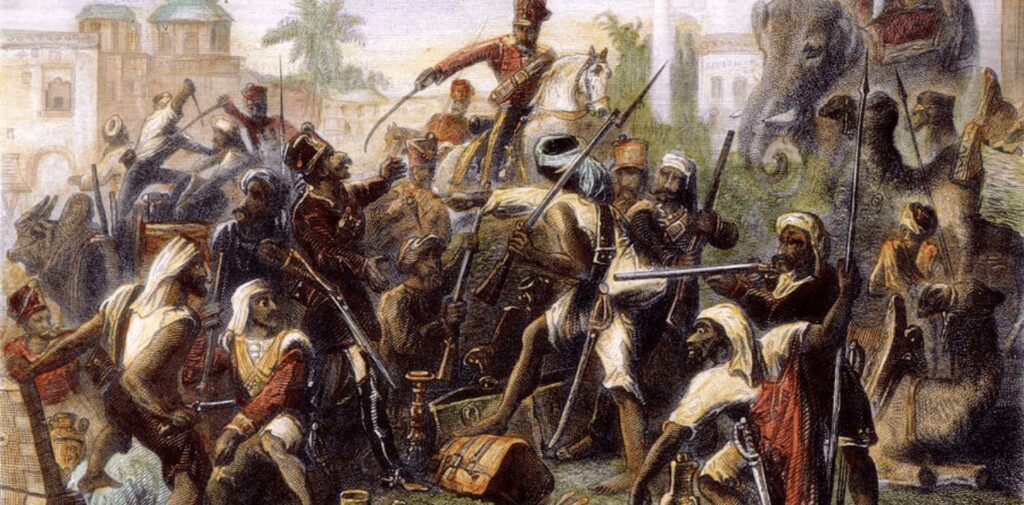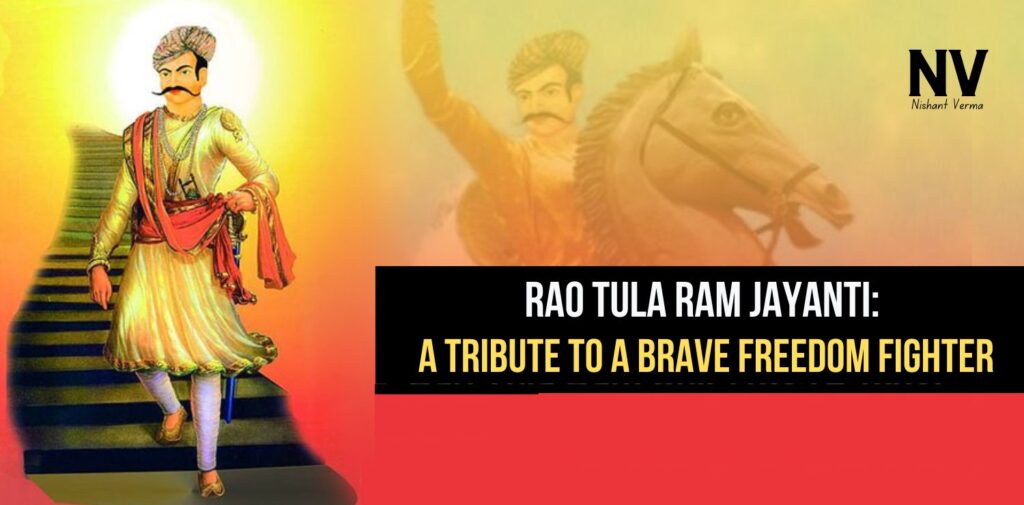On September 23rd, we celebrate Rao Tula Ram Jayanti, a day to remember and honor one of the most courageous leaders of India’s First War of Independence in 1857. Rao Tula Ram was not only a fearless warrior but also a visionary leader who fought for the dignity, honor, and freedom of his people. His contributions to the freedom struggle continue to inspire generations of Indians, reminding us of the price paid for the freedom we enjoy today.

Early Life and Background
Rao Tula Ram was born on September 9, 1825, in the village of Rampura in the princely state of Rewari, which is now a part of Haryana. He belonged to a royal family, and from a young age, he was raised with the values of courage, self-respect, and a deep sense of responsibility toward his people. His family had a long-standing history of bravery, and Tula Ram grew up with a strong sense of pride in his heritage. As the heir to the throne, he was trained in warfare, administration, and leadership, preparing him for the important role he would later play in India’s fight against British rule.
The 1857 Revolt and Rao Tula Ram’s Role
The year 1857 marked a turning point in India’s struggle for independence. The Indian Rebellion, also known as the Sepoy Mutiny, was a large-scale uprising against the British East India Company, which had been ruling large parts of India for over a century. Discontent was brewing due to oppressive policies, heavy taxation, and the disrespect shown to Indian traditions and beliefs by the British. It was during this time of turmoil that Rao Tula Ram emerged as a key figure in the revolt.
Rao Tula Ram was not just a local leader; he became a symbol of resistance in the region of Rewari and surrounding areas. When the rebellion broke out, he took immediate action to support the Indian soldiers (sepoys) who had risen against the British. Under his leadership, the forces of Rewari joined the revolt, and Tula Ram worked tirelessly to mobilize people, raise funds, and gather weapons to fight the British.
Victory at Nasibpur
One of the most significant achievements of Rao Tula Ram during the 1857 revolt was the Battle of Nasibpur, fought near the town of Rewari. Along with other rebel leaders like Gopal Dev, Rao Tula Ram gathered a large force to take on the British troops. The battle was fierce, and Rao Tula Ram’s forces inflicted heavy casualties on the British side. While the battle did not end in a complete victory for the rebels, it was a significant moment in the rebellion, showcasing the bravery and determination of Indian forces against a well-equipped and powerful British army.
The courage displayed by Rao Tula Ram and his soldiers in this battle earned him immense respect and admiration. His leadership during the Battle of Nasibpur is often remembered as one of the key episodes of resistance in the 1857 revolt, especially in North India.
Retreat and Diplomacy
Despite the initial success, the British forces were quick to regroup and launch counterattacks on the rebel forces. Realizing that continuing the fight in the open might lead to heavy losses, Rao Tula Ram adopted a different strategy. He retreated to the deserts of Rajasthan and later fled to Afghanistan, where he sought the help of foreign powers to fight against the British. His journey to Afghanistan was not just an act of survival but a well-planned diplomatic mission to gather support from neighboring countries for the Indian cause.
Rao Tula Ram’s diplomatic efforts are often overlooked, but they were crucial in keeping the spirit of resistance alive. His attempts to forge alliances with other powers show his understanding of the broader political situation and his commitment to freeing India from British rule. Though he could not secure the military aid he hoped for, his efforts were a testament to his determination and far-sightedness.
A Hero’s Legacy
Unfortunately, Rao Tula Ram could not return to India to continue his fight. He died in Kabul in 1863 at the young age of 38, reportedly due to illness. Though his life was short, his legacy has endured for generations. Rao Tula Ram is remembered not only as a military leader but also as a symbol of resistance, bravery, and patriotism. His contributions to the 1857 revolt were significant, and his efforts to challenge the British were an inspiration to many future freedom fighters.

Rao Tula Ram’s legacy lives on in the region of Haryana, where his name is still revered. Various institutions, roads, and landmarks are named in his honor, ensuring that his memory continues to inspire future generations. The people of Haryana take immense pride in their brave son, and his story is passed down through generations as a source of inspiration.
His Contribution to India’s Freedom Struggle
Rao Tula Ram’s contribution to India’s freedom struggle is immense. He was one of the first leaders to challenge British rule openly and fearlessly. His leadership during the 1857 revolt demonstrated the power of local resistance against a global colonial empire. By raising an army, fighting battles, and seeking foreign alliances, he showed that the desire for freedom was not limited to one region but was a nationwide sentiment.

Moreover, Rao Tula Ram’s actions emphasized the importance of unity in the fight against oppression. He was able to rally different sections of society, including farmers, soldiers, and local leaders, to stand together against the British. His leadership style was democratic and inclusive, which made him a beloved figure among his people.
Rao Tula Ram’s commitment to the cause of freedom, even in the face of overwhelming odds, is a lesson in perseverance. His refusal to surrender and his continued efforts to gather support for the Indian cause, even from foreign powers, shows his dedication to the larger goal of a free India.
Rao Tula Ram in Modern India
In modern India, Rao Tula Ram is remembered as one of the many unsung heroes of the freedom struggle. His life and legacy serve as a reminder of the sacrifices made by countless individuals in the long and difficult fight for independence. As we celebrate Rao Tula Ram Jayanti, it is important to reflect on his contributions and draw inspiration from his courage, determination, and patriotism.
In Haryana, particularly in the Rewari region, Rao Tula Ram is a local hero. His life story is taught in schools, and his legacy is celebrated through various events and programs. Statues and memorials dedicated to him serve as constant reminders of his bravery and leadership.
Conclusion
Rao Tula Ram was not just a freedom fighter; he was a true patriot who dedicated his life to the cause of India’s independence. His leadership during the 1857 revolt, his efforts to forge alliances, and his unyielding commitment to the freedom struggle make him a towering figure in India’s history. As we celebrate his Jayanti, let us remember his sacrifices and take inspiration from his life to work towards a better and more united India.
Rao Tula Ram’s contribution to India’s freedom struggle will never be forgotten. His bravery, leadership, and dedication continue to inspire millions, and his legacy as one of India’s greatest freedom fighters remains strong.




